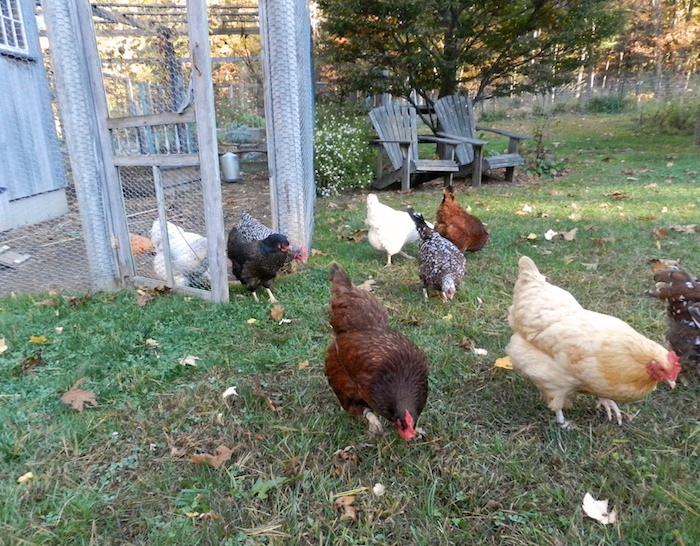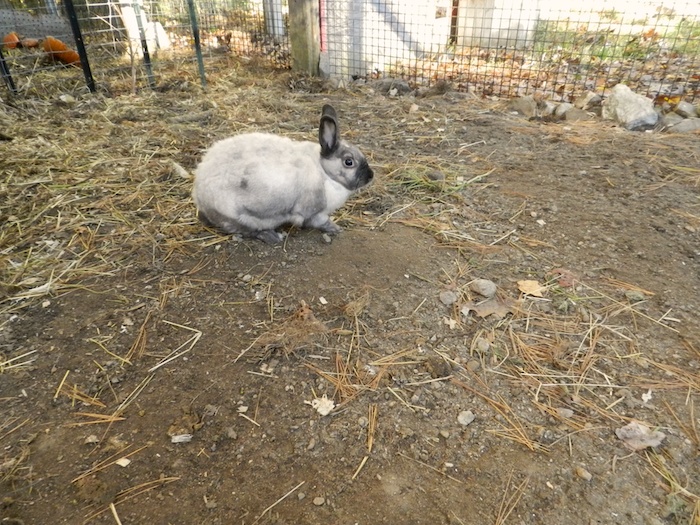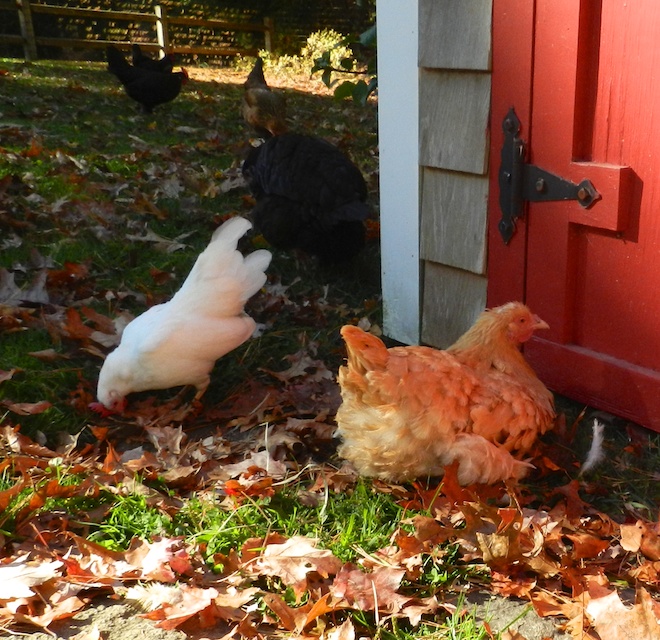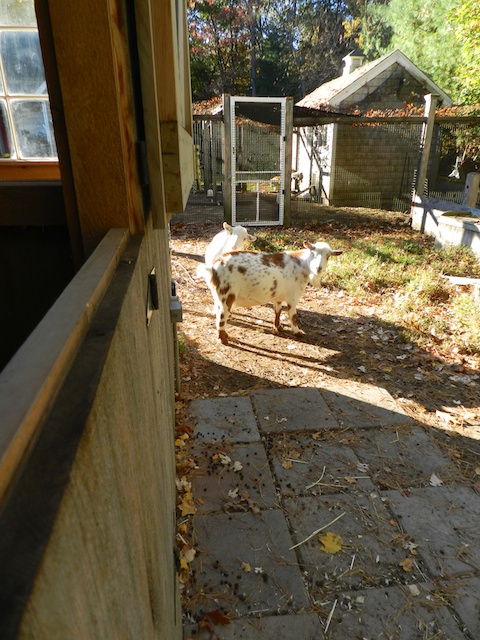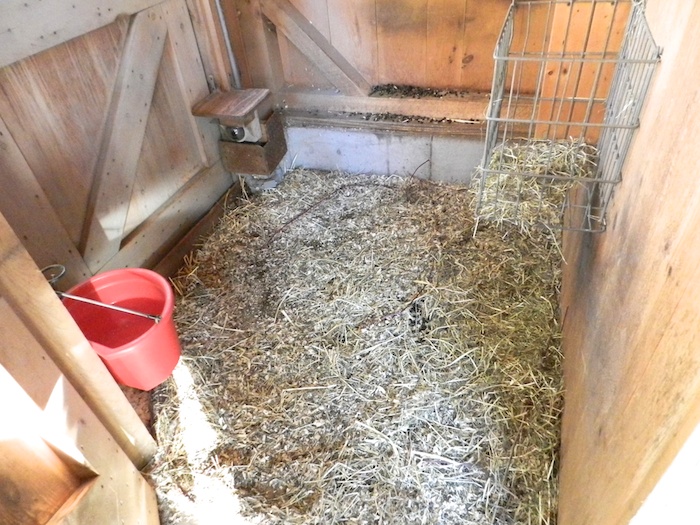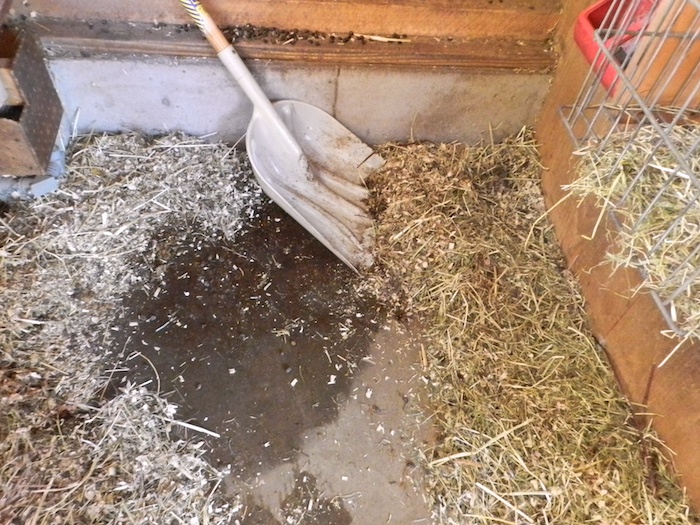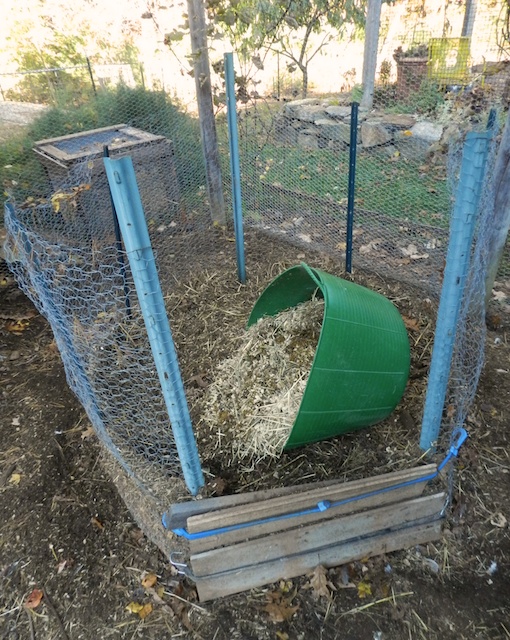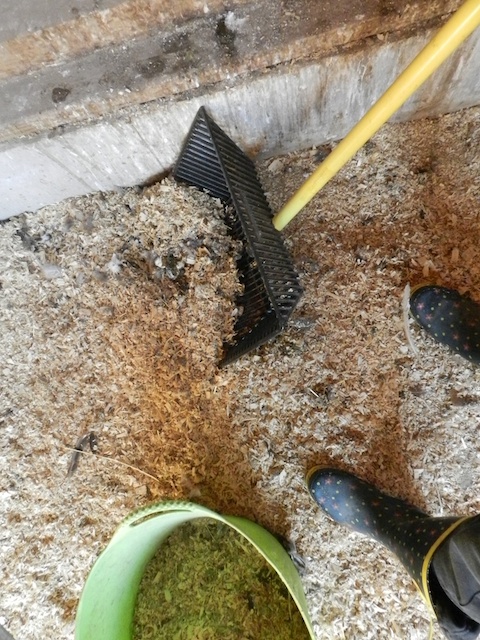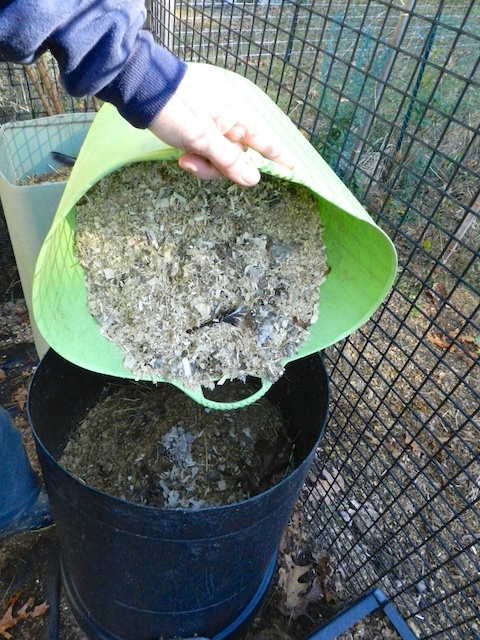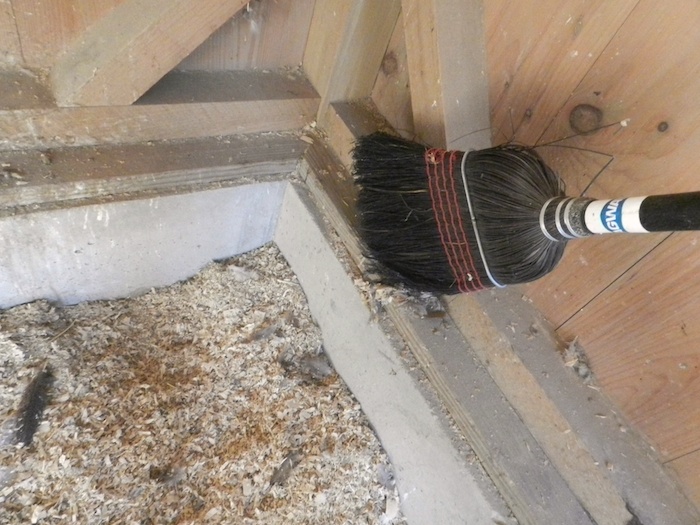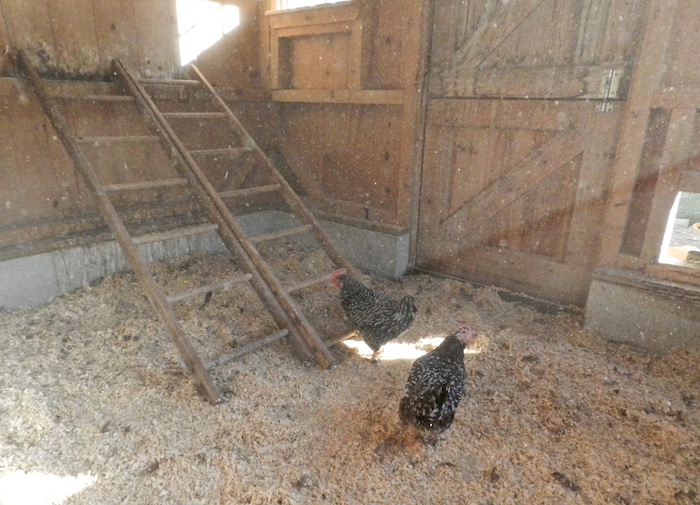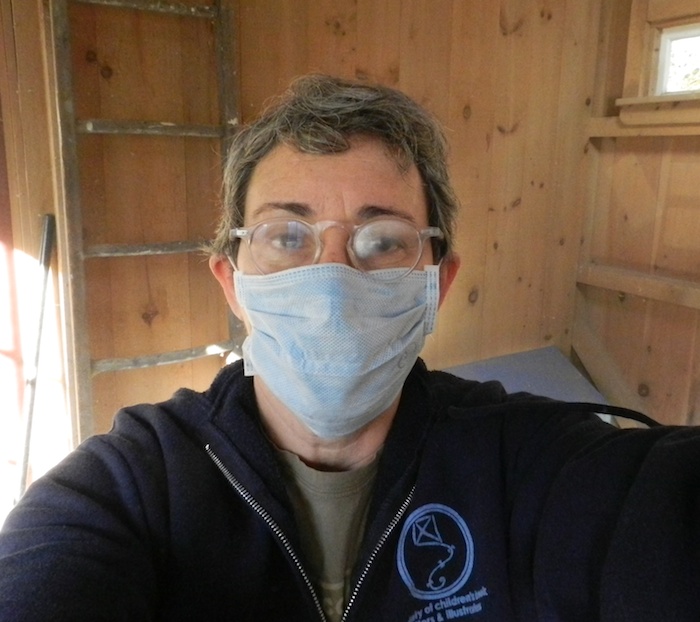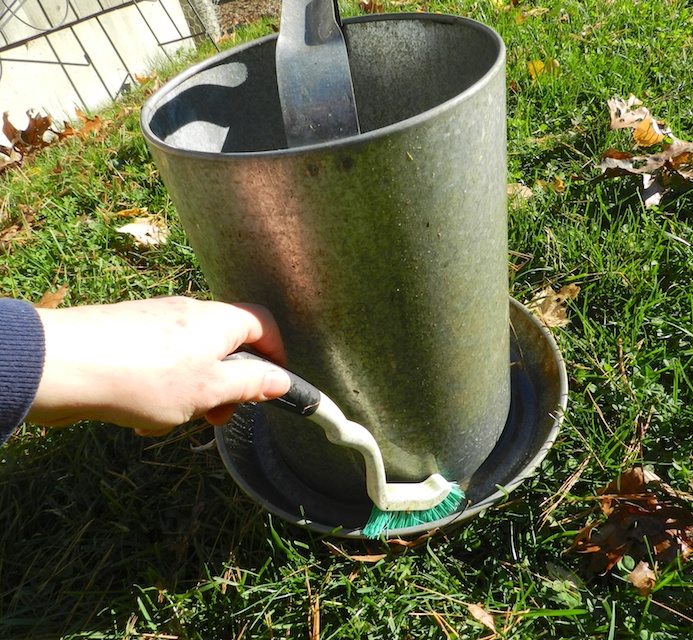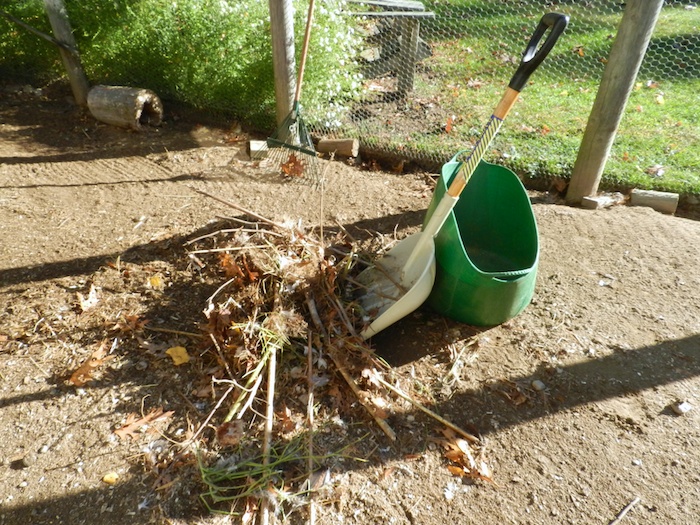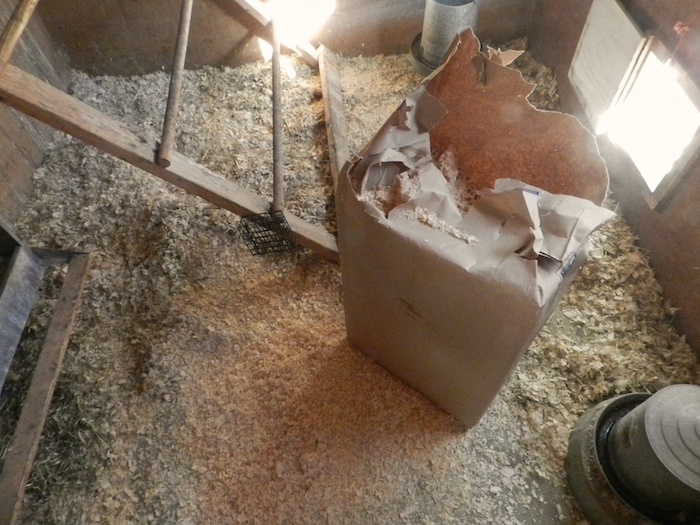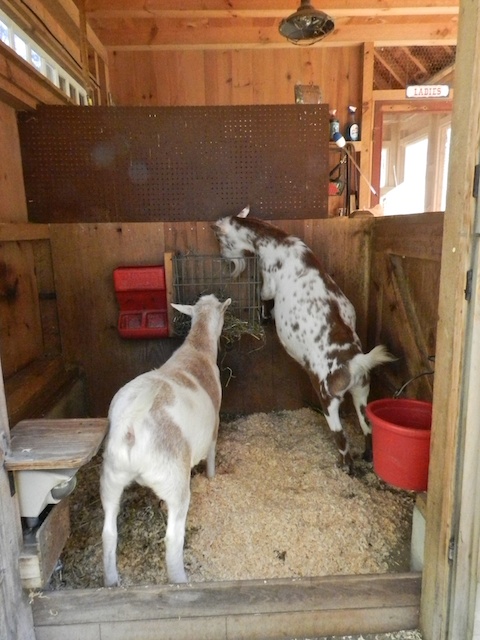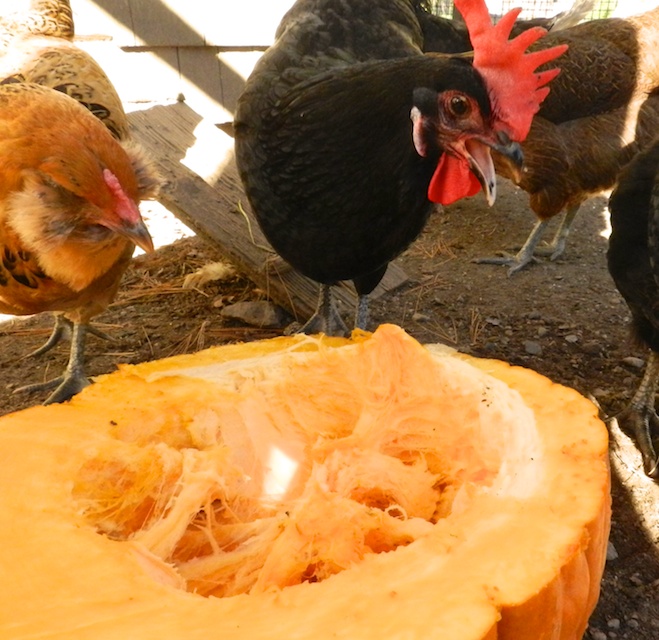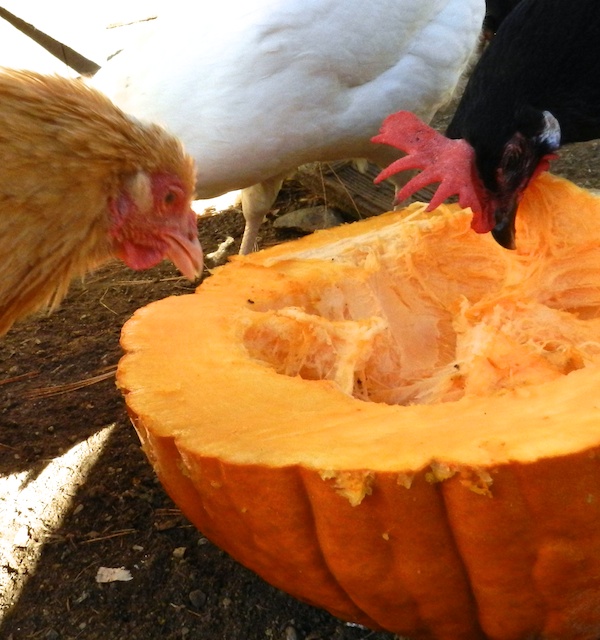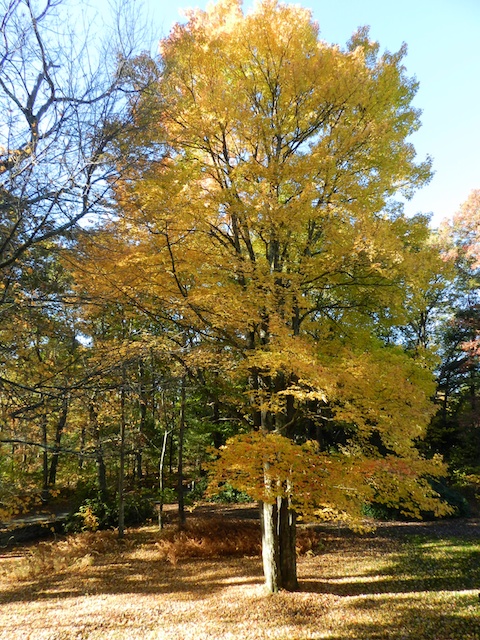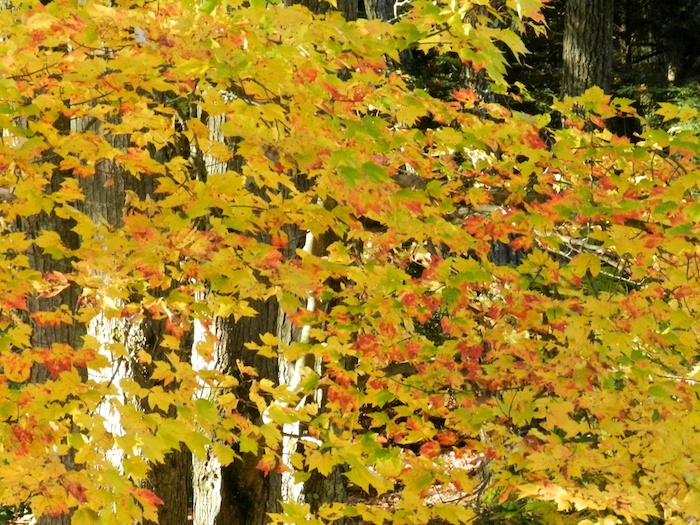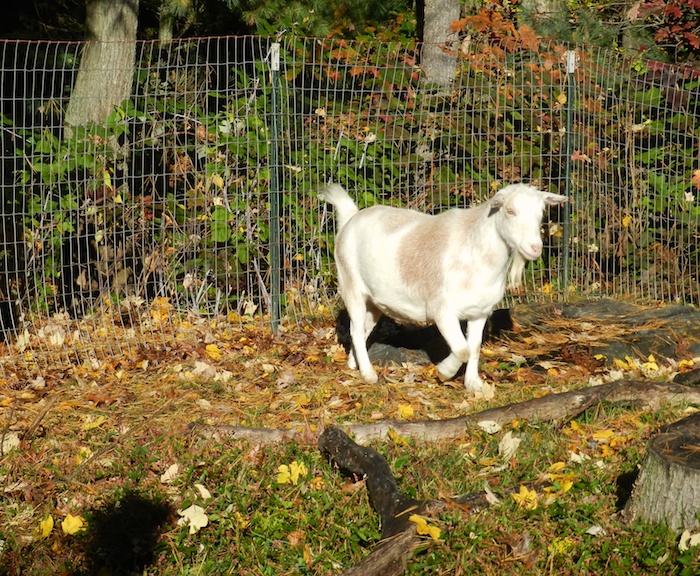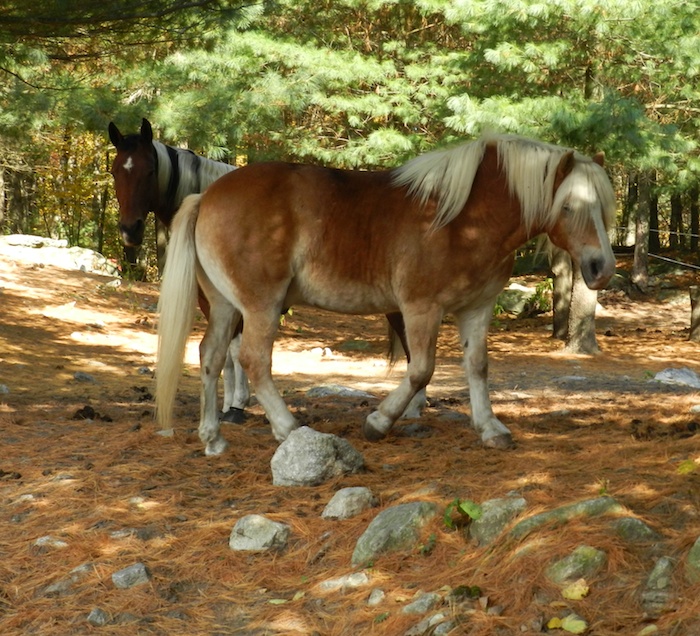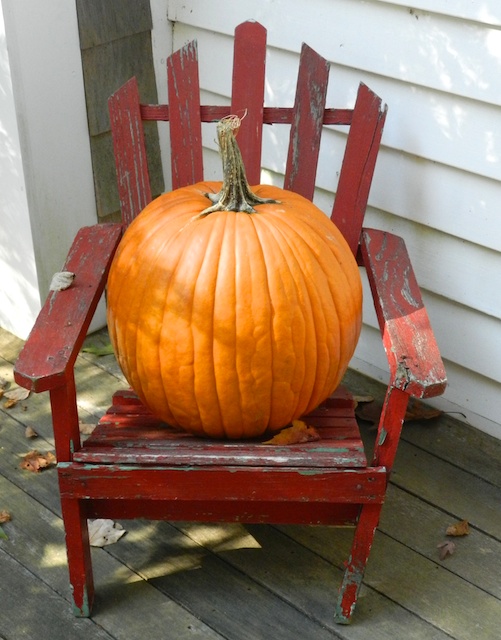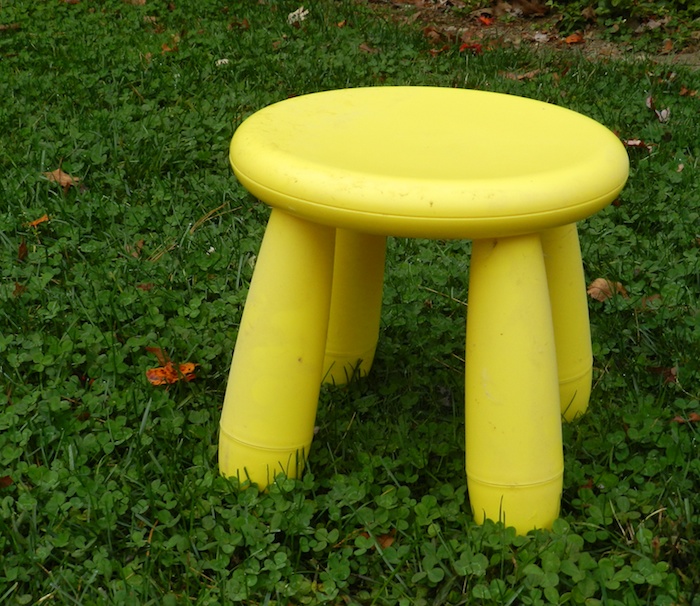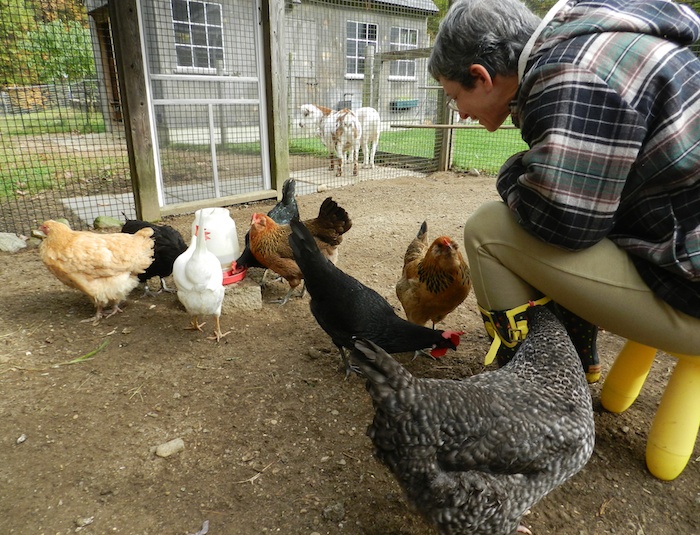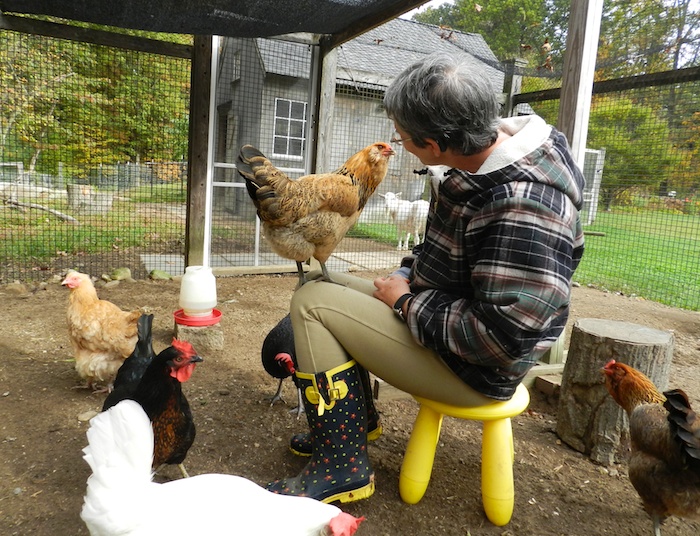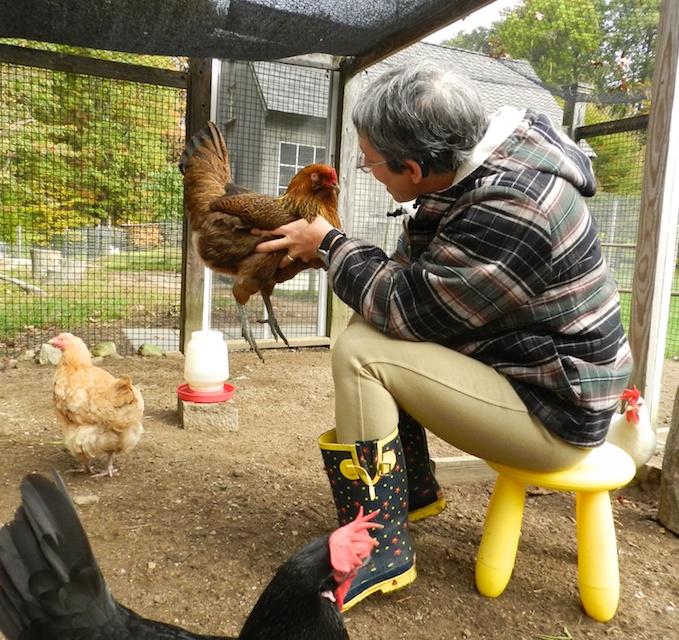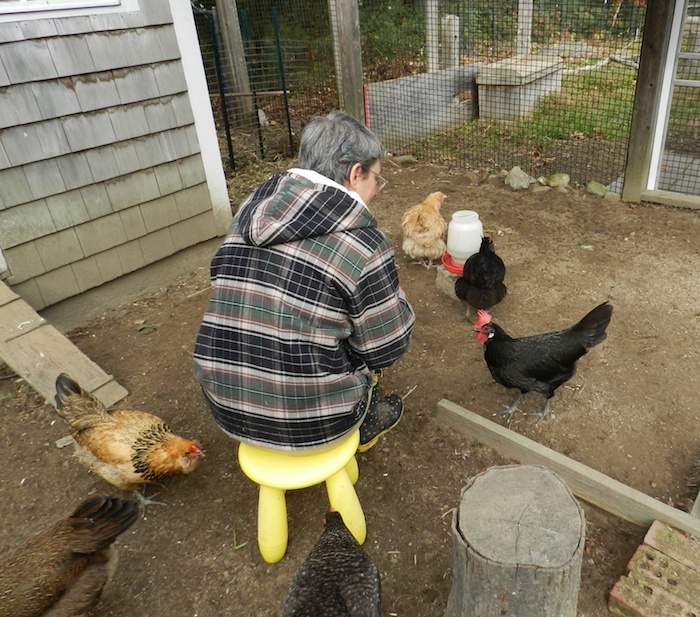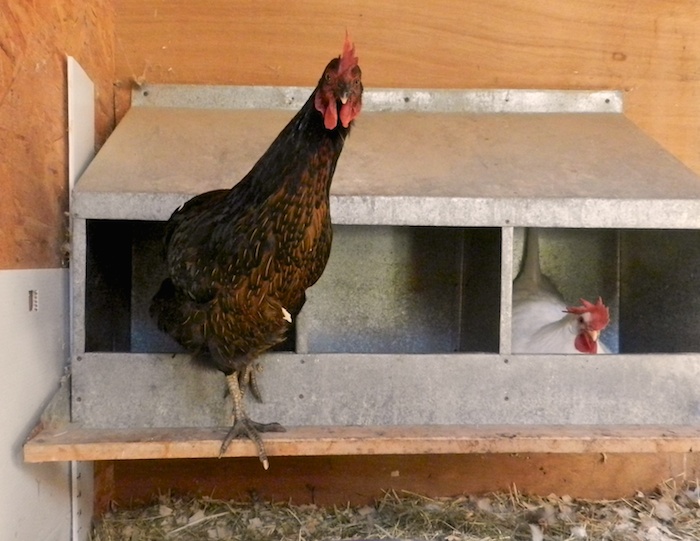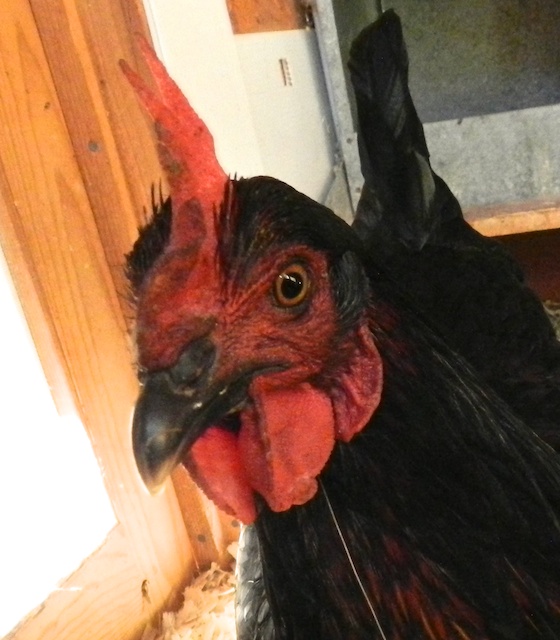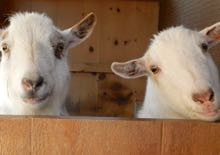I like a clean coop, and the reasons for that are numerous. There are the health benefits: removal of manure reduces the likelihood of internal parasites, controls flies and noxious odors, and provides the birds with dry, fresh air that keeps their respiratory tracts healthy. Removal of dust and cobwebs reduces the germ load in the barn. But, even without those reasons, I’d keep the coops clean because tidy and sweet-smelling enclosures with active, content, animals within makes me happy.
During the week, my barn chores take little time. I let the hens out in the morning, and let close them back in at night. I check water and feed. I use a kitty litter scoop to pick up any obvious messes (when you have a broody hen that leaves broody poop, you’ll want to do that!) Once a week, usually on the weekend, but it varies depending on my calendar (chickens are not the sort of animals that demand an exact schedule of their caregivers) I do a thorough coop cleaning, and clean the goats’ area.
This is what I do:
First, I let the hens out to free-range. It’s much easier to tidy up when they’re not underfoot.
I’m careful to keep Phoebe in. She checks where everyone has gone to.
Buffy gets carried onto the lawn and set into a warm patch of sun.
The goats get closed out of their stall, otherwise they will “help.” Have you ever tried to wield a shovel and bucket around a goat? Unless you’re a comedienne developing a slapstick routine, I suggest you don’t.
Although the goat stall doesn’t look too bad,
it does need shoveling up and airing out.
I also sweep and shovel up the manure that piles up in their outdoor pen. All of their used shavings and waste goes into the compost in the chicken run. The hens like scratching through it. The two species don’t share internal parasites, and the hens will eat up any nasty bugs found in the goats’ manure, so this is a practical way to turn the manure into useful compost for the garden.
Next, I go into the Gem’s area. Chickens poop a lot at night while they are sleeping, and so the bulk of their manure ends up under the roosts.
I use a fine-tined pitchfork to get it up.
That manure goes into a compost bin where the hens can’t get into it. This helps to control their internal parasites, as removing manure breaks the lifecycle of those pests. Eventually this will break down into lovely dirt and be used in my garden.
Chickens are continually scratching and shredding – food, bedding, manure. It becomes a fine dust that covers everything. It will accumulate under the pine shavings, looking like a layer of sand. A few times a year I shovel everything up and start fresh. I’ll be doing that soon, but not until the hens finish molting, so that I can get rid of the piles of feathers, too. But, every week I sweep the walls, sills and beams in the barn.
Look at the dust in the air!
I don’t do a vigorous sweeping every week, but when I do, I wear a mask. I don’t want to breathe those fine particulates in.
I top off the feeders.
I scrub the waterer.
I rake the pen.
This is a job well done.
These tasks are repeated in the Little Barn. When bedding gets low, I add fresh pine shavings. Love that smell!
Once all is clean, I call the hens back into their runs. By now the goat stall has aired out. I add fresh bedding, and put a little hay in the manger, after all, this entire cleaning routine took about an hour. The goats were starving.
